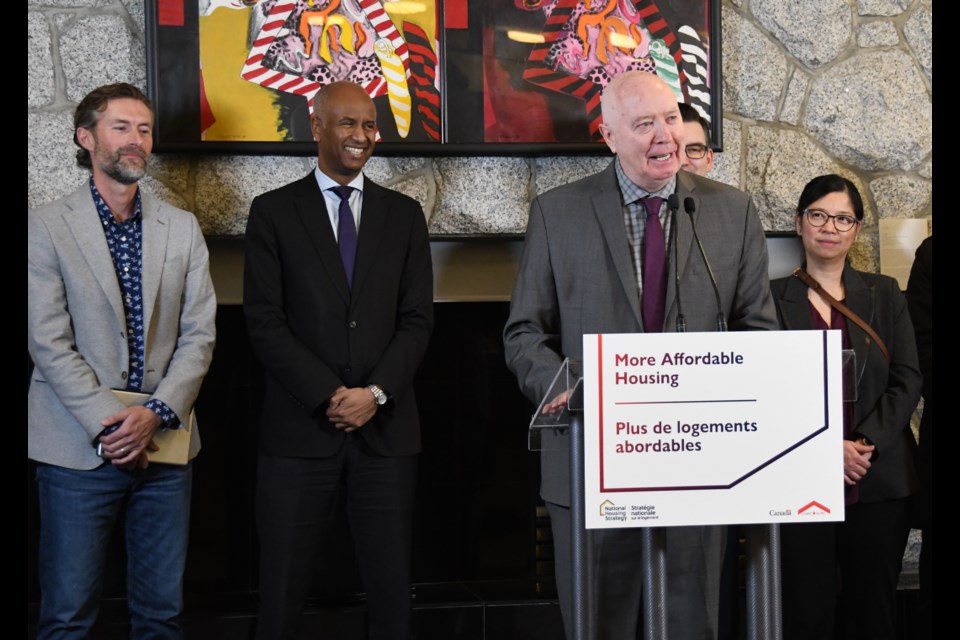More affordable rentals are coming to Burnaby.
The federal Minister of Housing and Diversity and Inclusion Ahmed Hussen came to Burnaby on Monday (March 14) to announce more than $154.5 million in funding for a total of 358 units of affordable rental housing in Burnaby.
Two six-storey rental projects by non-profit developer Catalyst Community Developments Society will get a combined $144-million investment from the federal government and City of Burnaby.
The feds are providing more than $113 million through the National Housing Co-Investment Fund, and Burnaby is pitching in more than $31 million in funding and equity.
The two Catalyst developments are at 7392 16th Ave., with 203 units, and 6889 Royal Oak Ave., with 134 units.
Thirty per cent of the units will be rented at 20 per cent below the median market rent, as calculated by the Canada Mortgage and Housing Corp. The remaining 70 per cent of units will be rented at 1.3 times the median market rent, according to Catalyst president Luke Harrison.
The median market rent in Southeast Burnaby, according to CMHC, is currently $1,344; in Metrotown it’s $1,527.
Both Catalyst developments are currently under construction: Royal Oak is expected to finish by spring 2025 and 16th Avenue by summer 2025.
The announced funding also includes a $10.5 million federal grant to the City of Burnaby for at least 21 “deeply affordable, rapidly built” new units, as part of the federal government’s Rapid Housing Initiative, according to Hussen.
Hussen said the affordability on the RHI projects will be “much, much deeper” than 20 per cent below market median, as the federal contribution is 100 per cent of the project’s capital costs. More information will come on the project before May.
Hussen said the RHI is geared to “the most vulnerable members of our community: those who are experiencing homelessness, or those who are at risk of experiencing homelessness, with at least 25 per cent dedicated exclusively to women-focused housing.”
Burnaby Mayor Mike Hurley said the city’s $31-million contribution to the Catalyst projects shows its commitment to investing in non-market housing.
“I think we’re more than showing that we’re a great partner to work with and sending signals to our other partners that we’re here to be a good partner.”
Catalyst president Harrison said it was a “circuitous route to get here.”
He noted it was challenging to deal with rising construction costs and rising interest rates: “This all had bad effects to how we deliver and create affordable housing,” he said.
He added Burnaby’s involvement should prompt other levels of government to invest further.
“Alongside this massive contribution that was made by the City of Burnaby, has come a very, very strong voice directly to Ottawa about: It’s time for investment to come to the City of Burnaby, particularly from the federal government, to create more affordable housing.”
Hussen told the NOW there are several factors that go into the decision of which municipalities get selected for the RHI funding (Burnaby is one of 41 recipients in the cities-stream).
“We look at the point-in-time counts for those facing homelessness; we look at vacancy rates; we look at the average cost of rent; we look at geographical factors and so on,” Hussen said.
“But Burnaby has the third highest cost of rent in the country, so they would make an obvious case for inclusion into the city stream of the Rapid Housing Initiative.”





